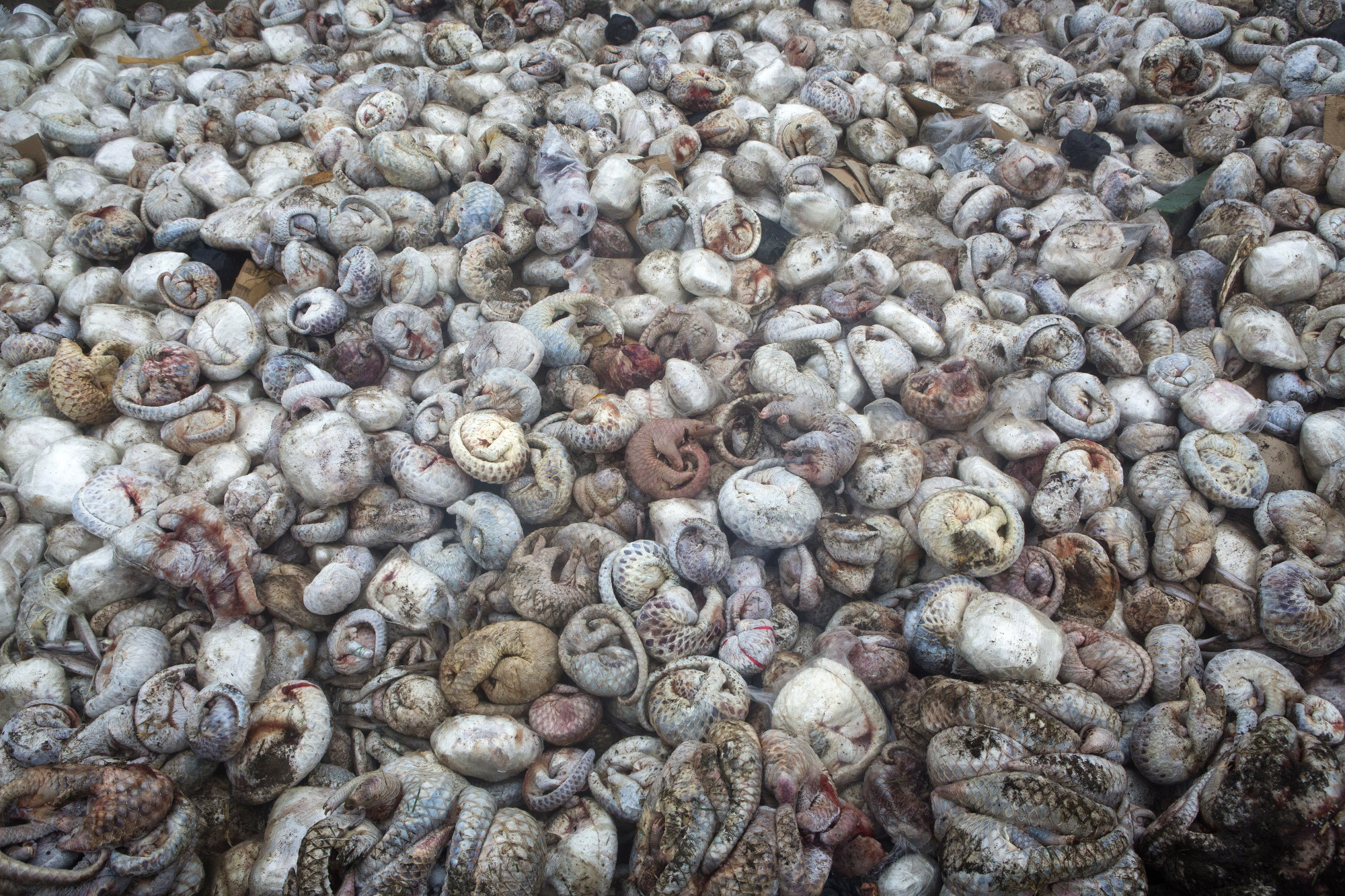
How the Chinese legend of pangolins came true – but in a terrible way
- Pangolins are said to travel all around the world underground in Chinese legend – this has come true, with pangolins the most trafficked mammals worldwide
- The greatest threat to the ‘scaly animal that bores through the mountain’ lies in the traditional Chinese medicine belief that their scales have medicinal value
Pangolins encompass eight species of the Manidae family, distributed across Africa and Asia, and are all adapted to an exclusive diet of ants and termites.
They have an armour of large geometric keratin scales covering the body and tail, powerful arms and claws to rip anthills and termite mounds open, and a long, sticky, insect-catching tongue.
The animal’s various names capture aspects of its form and behaviour.
The genus name Manis comes from the Latin manes meaning “ghost” or “spirit of the dead” in Roman mythology – alluding to the creature’s nocturnal lifestyle.

Its common name, pangolin, comes from the Malay pengguling (“one who rolls”), deriving from the noun-forming prefix peng- and guling (“to roll”), in reference to its habit of rolling itself up when threatened.
Originally referring to the Southeast Asian Manis javanica, the Sunda or Malayan pangolin, as noted in Dutch apothecary Albertus Seba’s 1734 Thesaurus, the name soon came to be used for all species.
In Chinese, its common name is 穿山甲, approximating to “scaly animal that bores through the mountain” – in Chinese legend, pangolins are said to travel all around the world underground.
This has come true – though not in a good way – with pangolins the most trafficked mammals worldwide.

A 1938 Nature article described how “dried scales are roasted, ashed, cooked in oil, butter, vinegar, boy’s urine, or roasted with earth or oyster-shells, to cure a variety of ills”, including helping to congeal blood and promote lactation.
Fortunately for the animal, China in 2020 removed pangolin scales from its list of ingredients approved for use in TCM.

However, trafficking, together with habitat loss, remains a problem and has led to the Chinese pangolin (Manis pentadactyla) and Sunda/Malayan pangolin becoming critically endangered, with the other Asian and African species endangered and vulnerable, respectively.
Bringing attention to their plight may just help save the scaly mammal, be it through art – Pangolins in Crisis, by Brent Stirton, was a winner at the Sony World Photography Awards 2020 – or observations such as World Pangolin Day, which fell on February 18.

